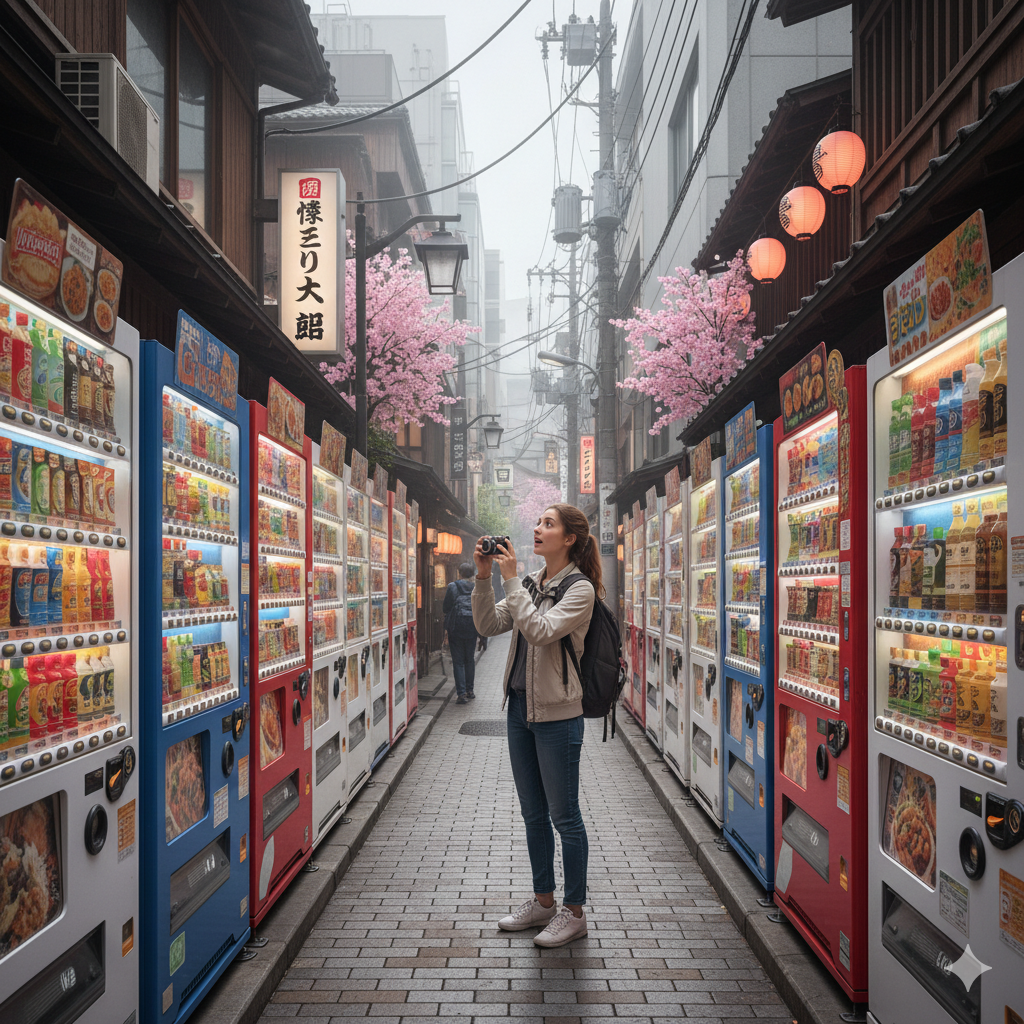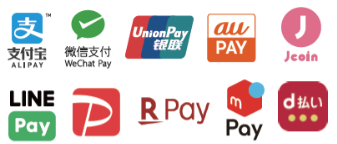Japan is a vending machine paradise👼Have you ever used one? 5 things you should know✨
Did you know that a video of a female foreign tourist kicking a vending machine at Naha Airport recently became a hot topic? The real reason why she did this is unknown. However, when I first saw the video, I was shocked and thought, “Maybe she panicked because she didn’t know how to return the change.”
Vending machines are commonplace for us Japanese, but they can be a little confusing for those who don’t know how to use them. In particular, unexpected situations like not getting your money back or buttons not responding can be a little stressful when traveling. This is the cause of minor panic that I often see many travelers fall into at airports and other places.
So, in this article, we’ll introduce five tips that travelers often overlook to help you use Japanese vending machines just like the locals do, so you’ll never have to panic in front of a vending machine again!
- The reason why vending machines are overflowing on the streets is because of Japan’s world-class “good public safety”
- You can’t use amounts that are too large or too small.
- Basics 🔰 How to buy with cash
- The button doesn’t light up😨⭐A solution when you can’t buy from a vending machine!
- Cashless payment is the opposite.
- From warm corn potage🌽 to hats🧢!?
- summary
The reason why vending machines are overflowing on the streets is because of Japan’s world-class “good public safety”
The reason why Japan is one of the world’s leading “vending machine paradises” isn’t just because of its technological prowess. The biggest factor is Japan’s low crime rate. Even if expensive machines are installed outdoors, the risk of them being vandalized or stolen is extremely low, so so many vending machines can be installed safely.

The number of vending machines is said to be about 50 times that of convenience stores, making Japan the country with the highest density of vending machines in the world. Surprisingly, this sight can be seen not only in cities but also on the summit of Mount Fuji. A single vending machine standing on the roadside is a silent witness that symbolizes public safety in Japan.
You can’t use amounts that are too large or too small.
Have you ever been in a situation where you tried to buy a drink with cash but the vending machine wouldn’t accept it? In fact, most vending machines in Japan don’t accept all types of coins or bills.
In particular, the following cashUnavailableSo please be careful.
1 yen coin, 5 yen coin, 5,000 yen bill, 10,000 yen bill

The reason is simple: it’s difficult to prepare enough change for large denomination bills, and it’s difficult to manage small coins. When traveling, we recommend that you always have some 1,000 yen bills and some 10 yen, 50 yen, 100 yen, and 500 yen coins on hand so you can always buy things from vending machines.

Basics 🔰 How to buy with cash
Most vending machines accept cash, so as long as you learn how to use cash, you can make purchases from any vending machine.
① Check the amount
All vending machine displays are sample products. Look at them to choose the product you want to buy. Once you’ve decided on a product, check the price displayed below the product.

②Put money into the slot
When you insert money, the off button will light up. Check the amount you inserted on the display and press the button for the product you want.

③ Take out the product
The product will drop into the outlet at the bottom of the vending machine. Open the cover and take it out.

④Get your change
If you receive change, check the change return slot and take out the money. Be careful not to forget to take it.

The button doesn’t light up😨⭐A solution when you can’t buy from a vending machine!
Even though you put money in, the button for the product you want doesn’t light up. This is one of the most common problems you’ll encounter. However, there’s no need to panic. Let’s start by checking the basics.
① check your finances
Do you have enough money🪙?
Let’s check the price of the product again.

Are the bills wrinkled?
Wrinkled or folded bills may not be read by the machine and will be returned. Try reinserting them a few times, or replace them with smooth bills.

② Sometimes you can’t buy something because of the vending machine
If the button still doesn’t light up, the machine will tell you why.
“Sold out” display:If the words [Sold Out] or [Preparing] are displayed in the corner of the product button, the product is out of stock.

“Out of Fish” Display:This indicates that there is not enough change in the machine and sales have been temporarily suspended. The design of this sign varies depending on the machine, so it may be a little difficult to find. You may be able to make a purchase using the exact amount or small coins.

3. Get back the money you put in
“Sold out” or “out of stock”There may be times when you can’t buy an item and just want the money back. There’s no need to panic like in the story of the flying kick at the beginning. Don’t worry, there’s a “change return lever”!
If you push this lever down, the money you put in will return to the return slot. Even if it takes a while for your change to come out, just operate this lever. There’s no need to kick the machine.

Cashless payment is the opposite.
Recently, more and more vending machines are accepting cashless payments, but there is a big pitfall that travelers tend to fall into.The order of operations is completely reversedIf you follow the steps below, you won’t get lost.
Check compatible services:
First, check the logos for transportation IC cards (such as Suica) or QR code payments displayed on the vending machine to see if they support the payment method you want to use. Let’s take a look at the most popular cashless payment services in Japan.
*Available services vary depending on the store*

Electronic money

Transportation electronic money

Credit card (tap payment available)
Only credit cards that support contactless payment can be used. Please check whether the card has the mark. Unfortunately, credit cards without the mark cannot be used.

QR code payment

Press the product button first 👈:
Unlike cash payments, you don’t put money in first,First press the button for the product you want. When you press the button, the light that was off will start flashing.

To operate the payment reader:
After pressing the button, select your payment method on the payment reader screen, such as “Transportation IC Card” or “QR Code Payment,” and then hold your smartphone or card over the reader to complete the payment. If you’re using a smartphone, you can often purchase immediately by selecting the product and holding your smartphone over the reader. If not, keep in mind that you’ll need to select the service you want to use.
I myself had trouble selecting a product and repeatedly holding my credit card over the device to make a purchase, but I couldn’t. It turned out I had overlooked the option to select the payment service I wanted to use.
There are several methods for QR code payment, such as having a machine scanner read your code, or scanning the QR code on the screen with your smartphone. Most explanations are only in Japanese, so using a translation app such as Google Lens can help you understand more easily.
Let’s look at some common types of machines.
Push-button operation type
You might be tempted to touch the screen to operate it, but you can actually press the button to switch the screen display. When the name of the payment service you want to use is displayed, it’s OK.

The screen is a touch panel type.
If there is no button, the service is touch-screen. Touch the service logo that is displayed.

QR code reader camera included
There are two types of payment methods for QR code payments only: one with a camera in the payment device, and one where a scan-only QR code is displayed on the device screen.

QR code only type
Some vending machines do not have cashless payment devices, but instead allow you to scan a QR code to access a dedicated website where you can make QR payments. Once payment is completed on the online store, the product will be dispensed from the vending machine.

From warm corn potage🌽 to hats🧢!?
Vending machines in Japan sell an astonishing variety of products, not just drinks, but also ice cream, dashi (soup stock), and, at some airports, even merchandise from the fashion brand New Era. As for food, most of the items are frozen, so if you’ll be taking a while to get it home, be sure to bring some ice packs with you.

Cold and hot drinks

Also, in one machine, there is a blue (cold)andRed (warm)It also features both hot and cold drinks. The hot drinks are quite hot at about 50°C (122°F), so please be careful not to get burned when taking them out. It is a convenient item that can also be used as a hand warmer in the winter. We recommend that you try the unique drink “corn potage” that is a winter staple in Japanese vending machines.If you come across oshiruko (sweet bean soup), try it.

But remember the most important rule here:Even if you press the button by mistake, you generally cannot return the product or get a refund.That is what it means.
In Japan, even if you are a local Japanese person, once you press the purchase button, you cannot exchange the product even if you made a mistake, so it is important to choose carefully before purchasing.
This rule only applies if you press the wrong button for personal reasons. If the machine is clearly malfunctioning, such as if the wrong product comes out, you can contact the administrator listed on the sticker on the vending machine and they will be able to help.

Finally, a tip for budget-conscious travelers: vending machines often carry premium prices due to their convenience. If you’re looking to save money, you can often find products at supermarkets and drugstores for much cheaper prices.
summary
At first glance, Japanese vending machines look like simple machines you can find anywhere, but behind the scenes, there are unique rules and cultural backgrounds hidden. By knowing these five tips, you can turn what could be a confusing and frustrating experience into a smooth and enjoyable one.
What other interesting rules have you discovered hidden in everyday life in Japan?




コメント